New Balance Fresh Foam 1080v11 vs 1080v10 Comparison Shoe Review
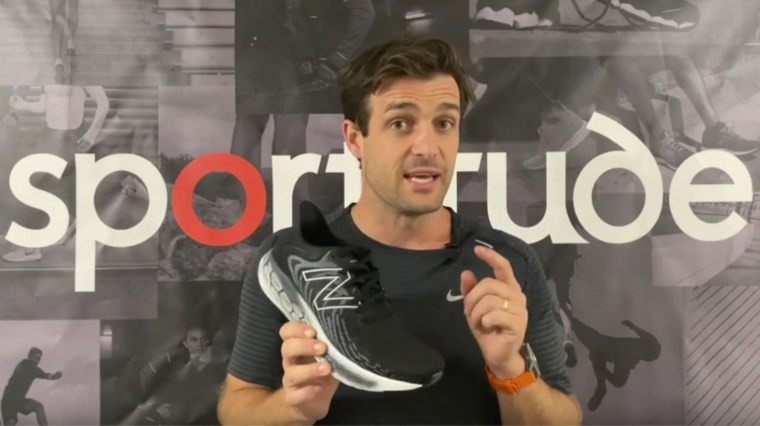
Josh reviews the New Balance Fresh Foam 1080v11 running shoes and weighs them up against their predecessor the New Balance Fresh Foam 1080v10. New Balance have made only subtle tweaks in this latest generation, staying true to this popular neutral running shoe family and following the philosophy that if it’s not broken, don’t fix it.
From the flex groove configuration to the rubber composition, the outsole is identical. New Balance have rolled over the Fresh Foam X midsole from the previous generation – because as runner feedback would have it, it’s a lightweight and soft cushioning material and is a proven asset for high mileage running.
A mild rocker design creates an effortless, flowing sensation on toe-off – catering to both long, easy-going runs and tempo training when you want a snappy response from the forefoot without compromise to protection.
The breathable and durable Hypoknit upper has been tweaked in terms of being truer to width. Again, in listening to runner feedback New Balance have offered slightly more depth and a more voluminous forefoot to ensure you get the fit spot on without feeling squashed up top or around your toes.
An internal heel counter creates a supportive wrap at the rearfoot to secure you onto the plush platform underfoot, and a flared heel design takes pressure off your Achilles to keep you running free of distractions.
Check out the review with full transcript below.
Hey guys, Josh here from Sportitude Running and today it is shoe review time and we're going to be talking all things New Balance Fresh Foam 1080v11. This shoe has just landed in Australia in the middle part of January and it's a very exciting shoe to talk about because there's not a lot that's changed in this model from the New Balance Fresh Foam 1080v10.
That’s a good thing because when a brand gets their design right which they did in the version 10, they don't want to change too much, they want to keep the momentum of this shoe going.
Of course, there's a couple of minor adjustments which we'll get into in today's review. We're going to be talking about the outsole, midsole and upper. We’ll compare it to the New Balance Fresh Foam 1080v10, profile the foot type that could be considering this shoe and give you all the information that you need at home to add it to your shoe rotation or not. Without further ado let's get stuck in.
Runner Profile
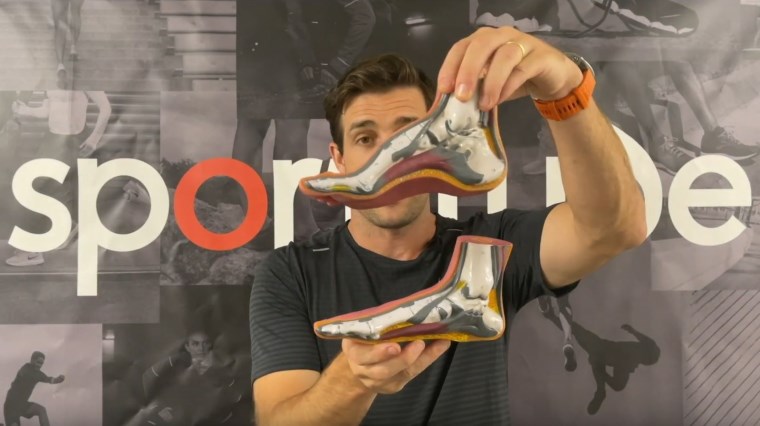
The first thing we're going to do is talk about the foot type that could be considering the 1080v11. It is a neutral shoe so there is no additional arch support on the medial side. That's been the case with the 1080 series for forever and a day.
It's designed for high mileage running so it has a lot of cushioning underneath the foot but on that medial side it is the same density in relation to the lateral side. There's no additional arch support underneath the medial side.
We're going to be looking at a neutral to supinated foot type with a high arch. This concept of runner will be coming down on ground contact, going through to midstance and before they get themselves engaged and ready to toe-off, a lot of the pressure will be either through the central part of the foot or the lateral side.
With the high arch we might see the foot ever so slightly supinate or under pronate. The pressure is either going to be through the middle part of the foot or towards that lateral component as the runner gets ready to toe-off.
However, we do find some success in fitting mildly overpronated foot types with flatter arches. Neutral foot types have a higher arch whereas mild overpronators have a more splayed arch - compressing through the medial side with a little bit more rotation as they go through midstance phase.
There are some overpronators that are used to running in neutral shoes and find any support to be a little bit restrictive, so we have had some success fitting 1080s in mildly pronated runners.
However, there are neutral foot types out there that have flatter arches in a static position as well. When they go through their transition it might splay out through the arch, but as they get engaged to go through their toe-off phase the pressure is through the central part of their foot, toeing off on that that second to third metatarsal.
Outsole
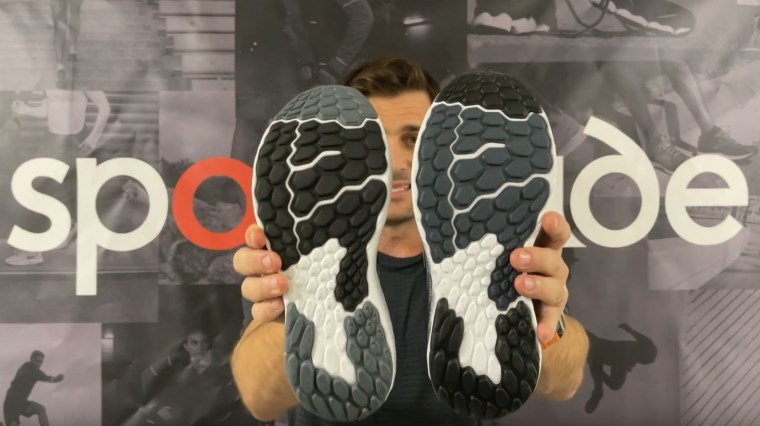
Let’s get to the exciting part of this shoe review and talk about the engineering breakdown. Like all my reviews we start from the ground and we work our way up. Let's get the New Balance Fresh Foam 1080v10 and New Balance Fresh Foam 1080v11 and talk about the differences.
This is not going to be long because as you can see at home the outsole is exactly the same. We have the same hard-wearing rubber in that high impact areas for heel strikers at the back column. As we come through to the forefoot we have full ground contact from the heel right through to the midstance phase and then as we go through to the forefoot. It’s exactly the same as the 1080v10.
You have two and a half flex grooves, one at the top and another that sits just underneath the ball of your foot to offer a little bit of stability. It is encapsulated and sits just under your first metatarsal to give that large toe joint more support in engaging and toeing off.
The reason they've kept the outsole exactly the same is because the biggest decision New Balance had to make was what do they do with the midsole. If they manipulated the midsole at all they would have had to have changed the outsole.
Midsole

The midsole which is their Fresh Foam X midsole is exactly the same as the 1080v10. The feedback was it was a light, soft and cushioned foam underneath the foot so that's fantastic. New Balance kept the same features and put it into the 1080v11.
It’s an 8mm heel-to-toe drop so it's at that mid-range point. We see some heel-to-toe offsets that go up to 10mm to 12mm mark for some high mileage running shoes. Also, when you start talking about other brands like Hoka, we get down towards that 6mm, 5mm and sometimes 4mm drops depending on the brand.
It's an 8mm drop and it runs pure. I find that when I sometimes put an 8mm shoe on my foot it might feel like a 10mm drop and vice versa, some 10mm drops feel like 8mm drops. It sounds contradictory but this shoe does feel like I would expect an 8mm drop to feel on the foot.
The biggest asset as I touched on a minute ago is the cushioning system. It’s so versatile and it does have a mild rocker as you come through to that forefoot.
When the runner comes down from heel to midstance, the cushioning and compression is nice and soft. The entry point gets plenty of cradle and compression underneath the foot, but that rocker as you come through to the forefoot aids in assisting and easing your toe-off as you get out of your gait cycle. Brands like Hoka and New Balance have trialled some rocker soles and Asics have started to dive into that market as well.
The 1080v11 does provide a very effortless and smooth toe-off for when you're running at slower, easy running paces for potentially a Sunday long run. Alternatively, if you want to throw this shoe on your foot and do some tempo sets and maybe some interval runs and you want a little bit more protection, I totally recommend this shoe. It does have a really nice snappy feel through that forefoot when you want to pick up the pace as well.
Upper
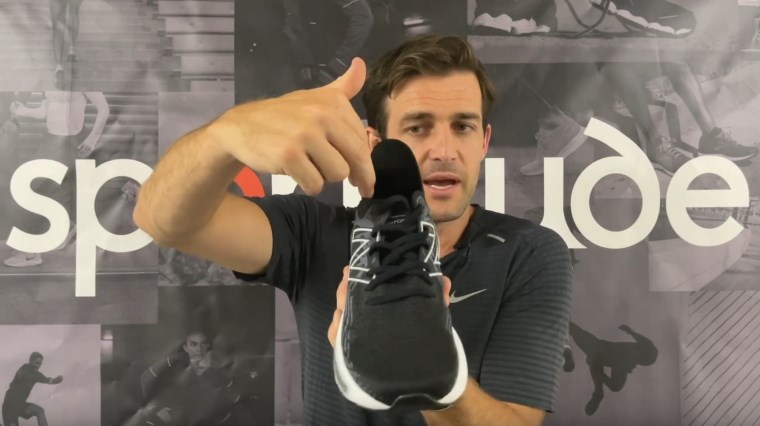
The upper is where most of the change has been made in this shoe but when I say most of the change we're still talking micro adjustments.
The feedback from the running community globally was that the New Balance 1080v10 was a little shallow across the arch of the navicular area and in that forefoot. New Balance have kept the same materials. They're using that Hypoknit structure, but they provide a little bit more depth around the arch and more volume through the forefoot.
Why have they done that? They don't want to make the same mistake twice. Where it became pretty confusing for us in store was when we were fitting a 1080v10 and that conversation really came into play when someone was potentially between two widths.
To use an example, we had a lady who might have been a B width traditionally and she may have found the 1080v10 too tight up top around the arch area and a bit shallow through the forefoot. We then put her into a D and it was a little bit too wide and sloppy and she was sort of halfway between two widths.
It’s the same discussion when you're talking about a men's from a D to a 2E. That's where it became a little bit tricky with the 1080v10. The discussion was that you could go a bit firmer and allow a shoe to give, but you don't want it to be too tight across your navicular.
However, if you go too wide in a shoe that has a Hypoknit upper which has quite a little bit of movement through it, it might become too sloppy after a good third of the life of the shoe has expired. We have to be cautious about what we're doing with the 1080v10 and how we're putting specific foot shapes inside it.
I think they've got it 100% right with the 1080v11. I’m sometimes a D width and sometimes a 2E, but 80% of the time I fit inside a D width. I was more comfortable in a 2E in the 1080v10 but I’ve dialled in and gone back to a D width in the 1080v11 and I'm really satisfied. I think from a width perspective it's true to what it says on the box.
I’m really excited that we're going to have a lot more success fitting the 1080v11 on a lot more runners that fall into this profile.
When we're talking about widths we let you know what's available in the market. Nothing has changed from the 1080v10. In the women’s model we have a B width which is standard and we have a D width which is marginally wider.
We have three widths in the men's offering, a D width which is standard, a 2E which is marginally wider and then we have the 4E which is the extra wide width.
Let’s talk about the upper and how it's structurally put together. As the asset is the midsole, it's a really cushioned soft and responsive forefoot. You want to make sure your foot is going to stay on that asset.
For their support system from the rear of the foot moving forward, New Balance use an internal heel counter structure. This plastic system which sits on the inside of the internal collar system provides a little bit more support so it keeps your foot nice and stable when it makes contact with the ground.
The height of the heel counter is exactly the same as what we found in the 1080v10. There was no real change with regards to the depth on offer and it has that little ‘elf’ or ‘pixie’ design. The idea behind that is you don't get as much pressure on the back of that lower Achilles insertion into your heel. It's nice and comfortable with the right amount of foam through the internal heel counter.
You can dial in with your heel lock lace if you want to but this shoe fits really pure in the back half of your foot, your heel sits nice inside it.
As you come through as we've touched on earlier, there is that increased depth through the navicular and a little bit more width on offer through the forefoot using that Hypoknit material.
It’s a durable and breathable material and there's a lot to like about it. I'm really happy that New Balance haven't altered too much with regards to the materials they're using in their upper.
The Wrap Up
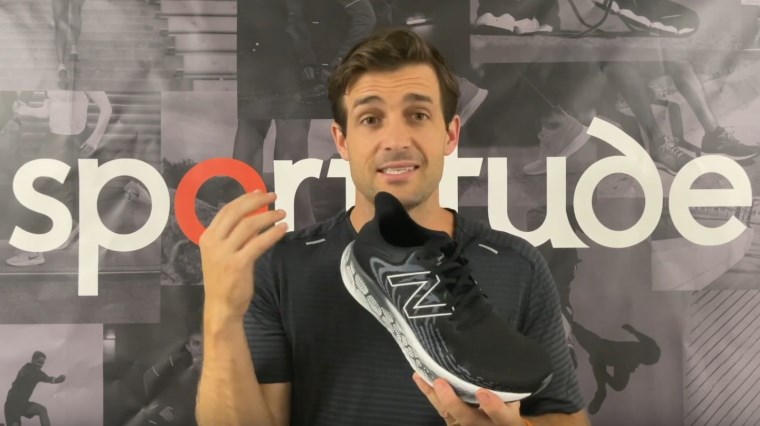
That is my take on the New Balance Fresh Foam 1080v11 and as I have touched on, it’s a great update. Not a lot has changed and obviously the changes are on the upper. It's been a very popular shoe globally for the best part of 12 months and I can't see that changing through 2021.
It's a go-to for a lot of mileage runners out there. It has the perfect amount of cushioning on a light platform and a relatively generous 8mm heel-to-toe offset. It's a very versatile and comfortable running shoe.
If you happen to be a 1080 wearer and you used the 1080v10 last year and you want to give us some feedback, please contact our Sportitude shoe experts. If you've tried on the 1080v11 or you've been running in it let us know how you've been going. I'd love to hear about all of your comments out there in the global running market.
Please subscribe to the Sportitude YouTube channel by hitting the red button if you haven’t already and we'll keep you up to date with all the information that we can in regard to new shoes coming out on the market.
Until next time stay safe, happy running and be kind to each other. We’ll see you at the road, take care.
FEATURES
New Balance Fresh Foam 1080v11
- Support: Neutral
- Upper: Knit
- Midsole: New Balance Fresh Foam X
- Offset / Drop: 8mm
Men
- Weight: 263g / 9.3oz
- Width: D (standard), 2E (wide), 4E (extra wide)
Women
- Weight: 230g / 8.1oz
- Width: B (standard), D (wide)
New Balance Fresh Foam 1080v10
